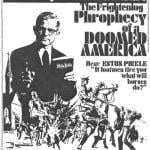“The Railway Man” is probably the best film you haven’t seen this year.
From the time he was a boy, Eric Lomax (Jeremy Irvine) always loved trains in his native Scotland. After World War II, he memorized timetables and had a keen interest in the railway system of Great Britain.
One day in 1980, while taking his seat on a train, Lomax (played as an older man by Colin Firth) meets Patti Wallace (Nicole Kidman), and they strike up a friendship that eventually leads to love and marriage, though Patti is almost 20 years younger than the veteran.
Soon Patti learns that Eric suffers from post-traumatic stress disorder. Eric has nightmares, and though he meets with the men from his squadron every month or so, this does little to alleviate his stress. Patti approaches Finlay (Skellan Skarsgard), the unit’s leader, to ask him to get Eric to open up to her, because his nightmares and behavior are worsening. Finlay does something desperate that gets Eric’s attention.
The backstory is that Eric and his band of brothers were captured by the Japanese in Singapore and forced to work on the Thai-Burma Railway in 1942.
The men are made to work under inhuman conditions. Eric, always mechanical, builds a small radio receiver so the men can learn news of the war in the POW camp. But the Japanese discover it, and Eric is isolated and tortured so he will admit to sending news to the allies. Even though he explains the device can only receive, they use waterboarding and psychological torture to get him to admit his “wrongdoing.” One man especially, the interpreter, Takashi Nagase (Tanroh Ishida), is compelled to make Eric’s life miserable, almost to the point of no return.
Thirty-five years later, Eric learns that Nagase (now portrayed by Hiroyuki Sanada) is still alive. He is working in Thailand at a World War II museum dedicated to reconciliation. Eric can hardly bear to learn that this man, who had so profoundly humiliated him, was still living. He decides to confront him and kill him.
“The Railway Man” was released in U.S. theaters in April and became available on DVD in August. In and out of theaters quickly, I only saw it because it was on the selection of films offered on a recent flight to Rome. Firth’s performance is at once vulnerable and strong. His psychological and spiritual suffering are evident in his stiff bearing and his almost childlike, obsessive interest in the railways that masks his inner pain.
The film is adapted from CLICK HERE TO CONTINUE READING at the National Catholic Reporter













